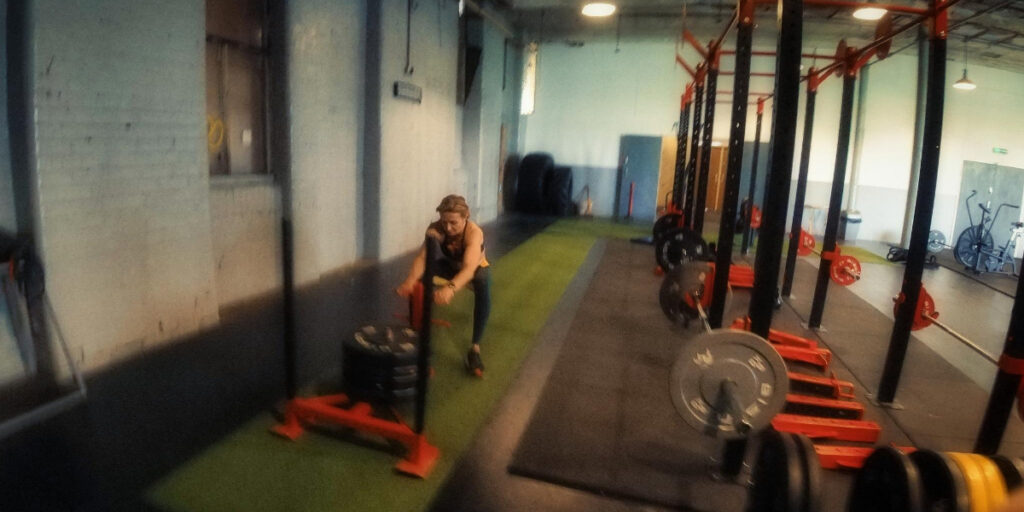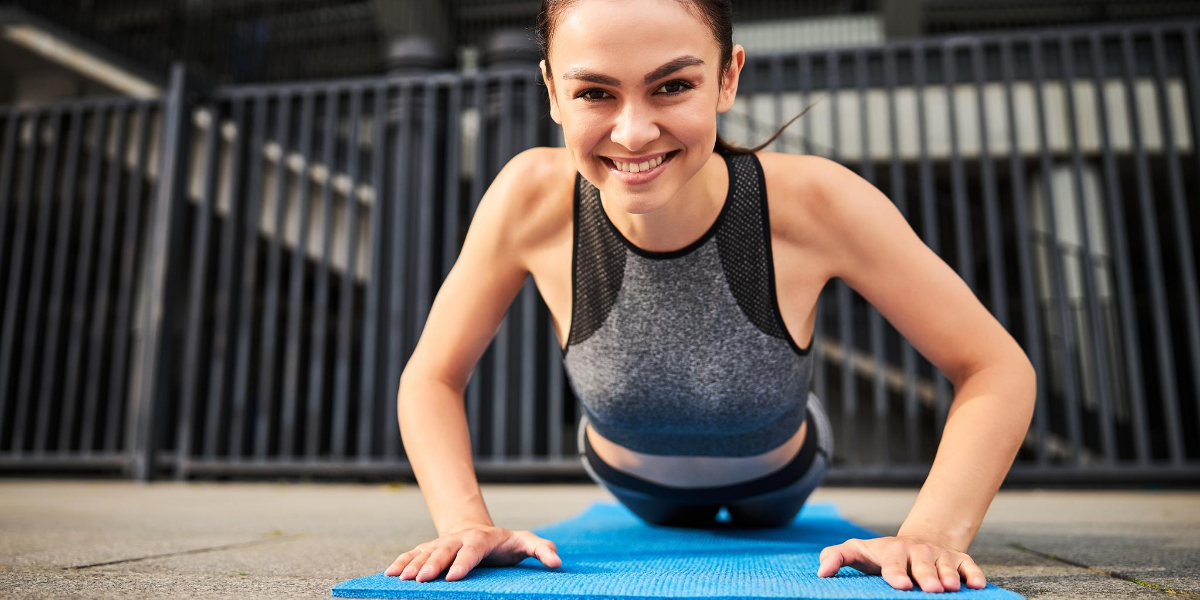When potential new clients want to learn more about Pilates, one of the concerns some people express is that taking up a new form of exercise might be too much for them. They see people running round fields or hear friends talking about visiting the gym to use equipment, and it can sound rather overwhelming, and they want to understand if Pilates is a low or high intensity exercise.
Yes, traditional Pilates is low-intensity exercise. Low-intensity workouts are ideal for those who want to get in shape without burning out their muscles or risking injury from high impact exercises.
Of course, over time, there have been a lot of variations and modifications to classic Pilates and there are now workouts, such as HIIT Pilates, that can provide you with a higher intensity workout than originally intended.
Low-intensity exercises: What are they?
Now you know Pilates is low intensity you’re probably wondering the terms means.
Low-intensity exercises are those that maintain your heart rate at approximately 50% of its maximum ability for an extended period of time, usually at least 10 minutes but more often 30+ minutes.
The good news is that means you’ve a lot of options alongside Pilates, such as walking, swimming, biking, dancing, and even gardening.

The goal of low intensity exercise is to improve your overall health without placing your body under extreme stress, and as such, these sorts of exercises are often perfect for anyone with existing medical issues that could be aggravated by more intense forms of exercise.
These types of exercises have a range of benefits, including improved joint flexibility and strength, reduced stress levels, and better posture, all with a minimal risk of injury.
They’re a great option for people who are new to fitness or who are recovering from an injury. Low-intensity exercises can also be a good way to ease into more intense workouts over time. And because they’re not as taxing on the body, they can be done on a regular basis without causing too much fatigue.
While low-intensity exercises may not offer all the same benefits as traditional cardio workouts, they come with their own set of advantages.
Low-intensity exercises offer a number of health benefits
Low-intensity exercises are beneficial because they improve cardiovascular health, help with weight loss or maintenance, and increase bone density.
Exercise releases endorphins, which have been shown to improve moods and decrease feelings of depression and anxiety. Additionally, exercising in nature has been shown to improve mental well-being even more than exercising indoors, so be sure to take a brisk walk around a park when you’re on dinner to feel re-energised for the afternoon.
Low-intensity exercises can be done in a variety of settings
Given the wide range of exercises that are classed as low-intensity you’ve got a wide range of options when it comes to where you work out. Go for a swim, do some Pilates at home, or a brisk walk around a local park.
The important thing to keep in mind is that any additional exercises you can fit into your day will help with your fitness goals. It’s very easy to do low-intensity exercises several times per week, if not daily, providing you consciously build them in to your day.
Low-intensity exercises can be tailored to your own fitness level
These exercises can be tailored to your own fitness level, so you can gradually increase the intensity as you get more fit. Low-intensity exercises also help improve your overall health, and they’re a good way to start exercising if you’re not used to it.
If you’re new to Pilates I would always recommend speaking to a professionally qualified instructor. They will help you understand the basic moves, but can also tailor them to create your own fitness routine that takes into account your current fitness level and any existing injuries you have.
High-intensity exercises: what are they?
So what about high-intensity exercises? What are they, and how are they different?
A high-intensity interval training session is any exercise that raises your heart rate above 80% of its maximum capacity for short bursts of time (less than 10 seconds). This type of workout is great for fat loss and muscle building.
High-intensity exercises are a great way to improve your fitness levels and overall health. They involve short bursts of activity that push your body to its limits, and, as a result, they can be really effective at burning calories and improving your endurance.
There are all sorts of high-intensity exercises that you can try, but some of the most popular include sprinting, weightlifting, and HIIT (high-intensity interval training) workouts. These exercises can be tough, but they’re also a great way to see results quickly. If you’re looking for an intense workout that will challenge your whole body, then high-intensity exercises are definitely the way to go.
High-intensity exercises offer many benefits
They offer many benefits, including:
- improved cardiovascular health
- increased muscle mass
- reduced body fat
- improved bone density
As with all exercises, they can help reduce stress and anxiety, and can even help improve your mood.
I love to experiment with different combinations of workouts. While most days I’ll hit my Pilates mat, on some I will also do additional strength and stamina training.

This is especially important if you wish to compete in physical events, such as the Hyrox event I’m currently training for.
High-intensity exercises are better for weight loss
High-intensity interval training (HIIT) is a type of exercise that involves short, intense bursts of activity followed by a brief recovery period. HIIT has been shown to be more effective than traditional aerobic exercise for weight loss, and it can also improve your overall health.
They also had lower levels of cholesterol and blood sugar, and increased their insulin sensitivity. Another study showed that HIIT was more effective than traditional endurance training at reducing belly fat.
Not only will you see results faster, but you’ll also enjoy better overall health.
High-intensity exercises are better for training
First, this type of training burns more calories in less time than lower-intensity exercises.
Second, because high-intensity exercises are so taxing, your body releases more growth hormone, which is essential for muscle growth and fat loss.
Third, the “afterburn” effect of high-intensity exercise helps you burn more calories long after you’ve finished your workout.
High intensity exercise vs low intensity exercise
OK, we’ve established there are two main types of exercise: high intensity and low intensity. High intensity exercise is when you work out at a heart rate that is greater than 80% of your maximum heart rate. Low intensity exercise is when you work out at a heart rate between 50% – 63%.
Let’s quickly compare the two, so you can decide which you might want to focus on:
One advantage of low-intensity cardio training is that it can be done without placing stress on your joints. In fact, many people find low-intensity cardio workouts to be more enjoyable because they can maintain a conversation while working out.
Low-intensity cardio also helps improve circulation of the body, transporting oxygen more effectively. This can be beneficial for those who have difficulty breathing or experience chest pain during high-intensity workouts.
Low-intensity workouts also help to strengthen slow-twitch muscle fibres which are recruited during low-level force production. The body becomes more efficient over time at using these energy sources and can work for longer periods of time. This is important for those who are interested in improving their endurance and overall performance.
High-intensity burns more calories per minute than low intensity. This means that you can do more exercise in less time. If you’re trying to lose weight, then burning more calories is better than burning fewer calories.
They also tend to be better for strength training as activities such as height lifting place your muscles under greater load, causing them to build back stronger, faster.
And of course, both high and low have a few things in common. They both raise your heart rate, they can both be done in a range of settings (including at home) and they will both provide you with the benefits of exercise.
The key difference is that high-intensity exercises can be very demanding and may not be appropriate for everyone. If you have any health conditions or are not physically active, consult your doctor before starting a high-intensity workout program.
Pilates: What is it?
Pilates is a type of physical exercise that focuses on stretching and strengthening the muscles. It is often recommended to people who are looking to improve their posture and reduce back pain.
It’s a workout that has been around for many years and it is designed to focus on the core via slow, precise movements and breath control.
In addition, Pilates moves other areas of your body as well-mainly your arms, glutes, and lower legs. This full-body workout is a great way to get in shape and improve your overall fitness level.
How does Pilates compare to other low-intensity exercises?
Pilates is a low-intensity exercise that is great for improving strength, balance, and flexibility. Compared to other low-intensity exercises, Pilates is unique because it focuses on precision and control, which can help improve your posture and alignment.
Typically, you will require dedicated time and space to practice Pilates, whereas some other low-intensity exercises, such as a brisk walk, can be easily done throughout the day, even when you’re at work.
Dedicating time will pay great dividends. A 2019 study concluded Pilates “promotes significant effects in cardiorespiratory fitness, body composition, and performance”.
Pilates is a better choice for low-intensity exercise
This is one of the reasons I fell in love with Pilates. Unlike a lot of other workout types, it is a full-body workout that focuses on strengthening your core muscles, which can help improve your posture and reduce your risk of injuries.
By dedicating a short amount of time regularly, you can see big improvements throughout your body as it also helps improve flexibility and balance, which can be important if you want to stay safe when participating in other activities.
Unlike some other low-intensity exercises, Pilates does not require any special equipment, so it’s perfect for people who don’t have a lot of time or money to spare. If you’re looking for a healthy and effective way to stay active, Pilates is definitely worth considering.
Which type of person is best suited for Pilates?
Anyone looking for a workout that is low-impact and helps to improve flexibility and posture is a good candidate for Pilates.
Pilates is an exercise that can be done by anyone, but it may be more beneficial for some people than others. The type of person who would enjoy Pilates the most is someone who likes to challenge their muscles and enjoys a full-body workout.
Pilates can also be beneficial for mental health conditions such as anxiety, depression, and fatigue. In addition, those who suffer from back pain may find relief after doing Pilates regularly.
Pilates can be HIIT
I mentioned at the start that some modern variations of Pilates have introduced new concepts, and one of the areas I’ve enjoyed experimenting with is HIIT. But that’s another story, one you can read about by clicking this link: Is Pilates a High Intensity Interval Training (HIIT) Workout?
Sources




